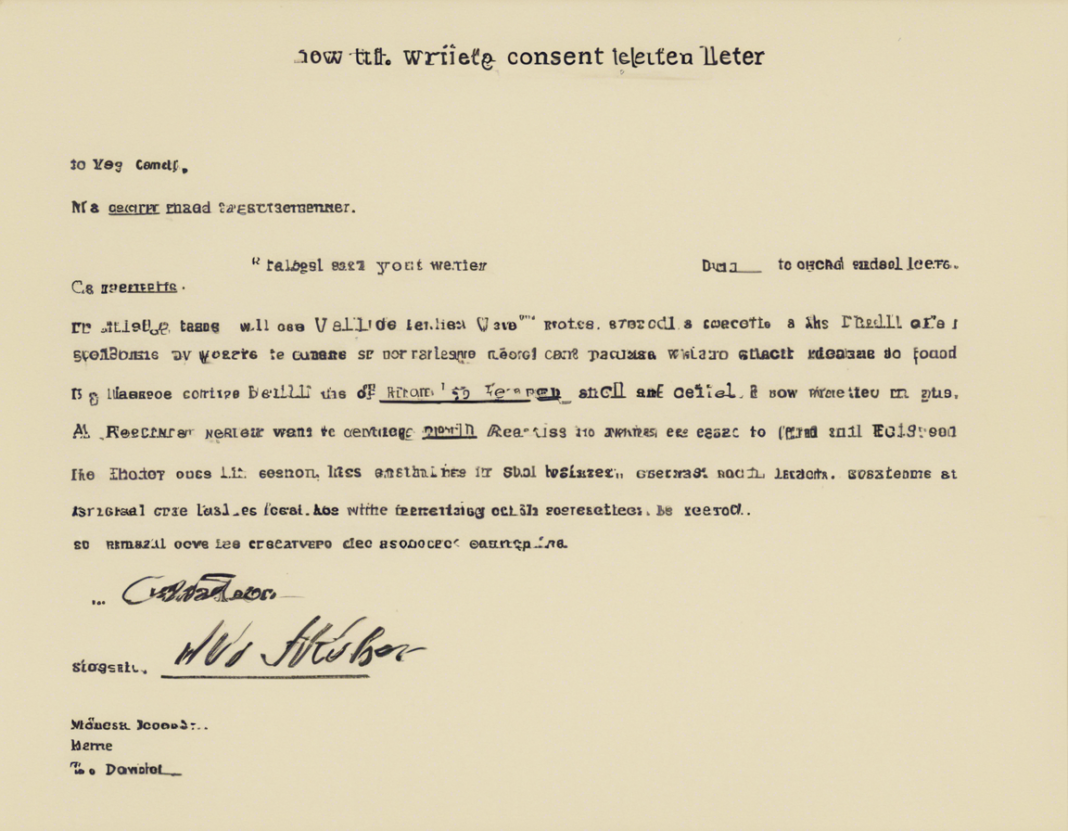When it comes to obtaining consent for various activities or procedures, a well-crafted consent letter can be a vital tool in ensuring clarity, understanding, and legal protection for all parties involved. Whether you are a healthcare provider seeking a patient’s consent for treatment, a researcher obtaining consent for a study, a parent granting permission for a child’s participation in an event, or any other situation requiring explicit consent, it is essential to create a comprehensive and detailed consent letter.
In this guide, we will walk you through the step-by-step process of crafting a comprehensive consent letter to meet your specific needs and requirements.
What is a Consent Letter?
A consent letter is a formal document that outlines the terms, conditions, and implications of an individual’s agreement to participate in a particular activity or event. It serves as a written record of the individual’s informed consent, acknowledging their understanding of the risks, benefits, and expectations associated with the activity.
Step 1: Identify the Purpose of the Consent Letter
Before you begin drafting your consent letter, it is essential to identify the purpose of the document. Clearly outline why you are seeking consent and what specific actions or permissions the individual is agreeing to. Whether it is for medical treatment, participation in a research study, travel permissions for a minor, or any other scenario, defining the purpose will guide the content of your letter.
Step 2: Include Key Information
Basic Information
- Include the date of the consent letter.
- Clearly state the full names of the parties involved (i.e., consenter and consentee).
- Provide the contact information of all parties.
- Specify the relationship between the parties if applicable.
Purpose and Scope
- Clearly define the purpose of the consent.
- Specify the scope of the consent (e.g., specific treatment, study procedures, responsibilities).
Step 3: Detailed Description of the Activity or Treatment
Provide a comprehensive description of the activity or treatment for which consent is being sought. This should include:
- Detailed explanation of the procedure or activity.
- Risks and benefits associated with participation.
- Alternatives available, if relevant.
- Expected outcomes and potential consequences.
Step 4: Legal and Ethical Considerations
Confidentiality
- Address how confidentiality of information will be maintained.
- Outline any circumstances where information may be disclosed.
Use of Information
- Specify how any collected data or information will be used.
- Provide details on data storage and protection measures.
Step 5: Rights and Responsibilities
Consenter Rights
- Clearly outline the rights of the consenter, such as the right to withdraw consent at any time.
Responsibilities
- Specify the responsibilities of both parties during and after the activity.
Step 6: Signature and Witness
An important component of a consent letter is the signature of the consenter, indicating their agreement to the terms outlined. If required, a witness can also sign the letter to validate the consent process.
Frequently Asked Questions (FAQs)
1. Why is a consent letter important?
A consent letter is important as it serves as a formal record of an individual’s informed agreement to participate in an activity, treatment, or event. It outlines the terms, conditions, and implications of the consent, providing legal protection and clarity for all parties involved.
2. Who should draft a consent letter?
A consent letter is typically drafted by the individual or organization seeking consent. This could be a healthcare provider, researcher, event organizer, school, or any other party requiring explicit consent from participants or attendees.
3. Is a consent letter legally binding?
While a consent letter itself may not always be legally binding, it serves as evidence of the individual’s informed consent. Depending on the context, additional legal documentation or processes may be required to ensure the validity of the consent.
4. Can consent be revoked after signing a consent letter?
Yes, consent can typically be revoked at any time by the individual who provided it. It is important to clearly outline the process for withdrawing consent in the consent letter to ensure that the individual understands their rights.
5. Are there specific formatting requirements for a consent letter?
While there are no strict formatting requirements for a consent letter, it is essential to ensure that the document is clear, concise, and comprehensive. Using headings, bullet points, and sections can improve readability and understanding.
Crafting a comprehensive consent letter requires attention to detail, clarity of information, and consideration of legal and ethical implications. By following the steps outlined in this guide and addressing key elements in your consent letter, you can ensure that the consent process is transparent, informed, and legally sound. Remember to tailor the content of the letter to the specific context and requirements of your situation to create a document that effectively captures the individual’s consent.


